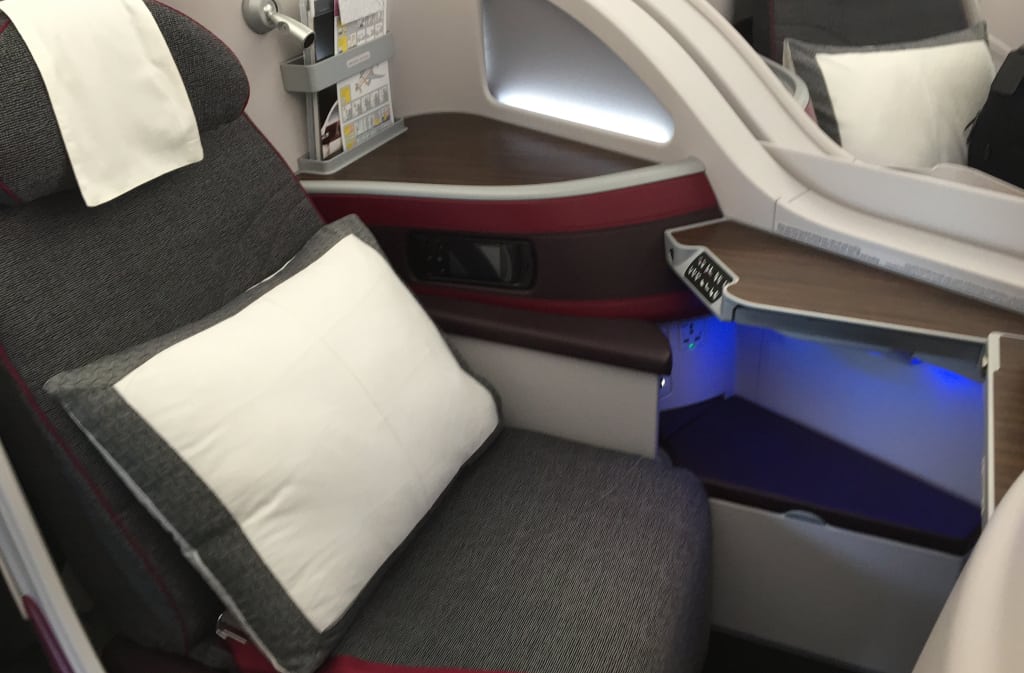Skift Take
It’s the old story: Do you want it quickly or do you want it to be special?
As we look back at a year marked by numerous new aircraft interiors introductions, we must also take note of the challenges unique branding poses to the timely delivery of new aircraft and how those challenges can result in limited innovation.
The risks of custom products are highlighted by events such as the delay of American Airlines’ new Boeing Dreamliners, awaiting delivery of Zodiac Aerospace’s new customized Premium seating. Custom product issues also led to a brief delay of Qatar Airways’ new A350XWB, which His Excellency Akbar Al Baker, CEO of the airline, attributed to “small issues with our BFE supplier which were resolved by them.”
The term BFE (buyer-furnished equipment) applies to components which an airline orders outside for line-fitting by the aircraft manufacturer, compared to SFE (supplier-furnished equipment) which the aircraft manufacturer orders. It is common practice for aircraft manufacturers to pre-select and approve aircraft components, as part of a standard build set, which become SFE. Airlines can make limited changes to certain elements of SFE, according to design and brand differentiation plans. They can also establish direct contracts with suppliers of custom products and install them on their aircraft as BFE.
BFE deliveries are fitted on the aircraft after clearing quality control at the aircraft manufacturer’s facility. When delivery of those products is delayed, or when the products are rejected by quality control, the production and delivery timeline for the whole aircraft can be disrupted.
Aircraft manufacturers minimize these risks through the catalogue and encourage airlines to incorporate catalogue products on their aircraft. While the catalogue may include diverse suppliers for a single component, these suppliers might not have features the airline would like to introduce as part of its branding initiatives.
A tug of war results between the airline and the aircraft manufacturer, between catalogue suppliers and competitors, to balance the priority of timely aircraft deliveries with the desire to introduce unique products to the cabin. More often than not, there is greater flexibility for customization in the Premium cabins, and the Economy cabins are pushed to catalogue.
As Fabrice Brégier, President and CEO of Airbus, told Skift during the delivery ceremony for the Qatar A350XWB, balancing these needs, while simultaneously ramping up production of the A350XWB to meet demand from Qatar and other A350XWB customers, is a challenge Airbus addresses with airlines directly.
“Most of our customers understand the industrial constraints, understand that there is some room left for customization, especially in the Premium Business and First Class categories, and that we need also to have standardized industrial processes,” said Brégier. “I think this is a good check and balance we have, especially for the first four years of development when we started to build this catalog. We have the right balance, I believe, between the necessity to customize such an aircraft and, at the same time, standardize solutions for an industrial ramp-up.”
This methodology avoids delays and also helps the aircraft manufacturer and its supply chain maximize the cost-benefits of large-scale production, but it can serve to stifle the introduction of new products and impact supplier diversification. Established manufacturers accommodate some customization on catalogue products, giving airlines brand differentiation with fewer risks, but the recent delays of the American Airlines Dreamliner show that even proven manufacturers can run into trouble with customization.
As a result, large-scale customized aircraft interiors, which incorporate unique features in all cabins, and introduce new cabin concepts, such as Etihad’s ‘Reimagined’ aircraft interiors, are rare events. While such programs stretch the capabilities of manufacturers in the supply chain, introduce new components and production methods, and encourage the diversity of options available to airlines, they require significant investment, careful planning, and a high tolerance for risk. When those programs are successful, they encourage other airlines to innovate. When they fail, they make the industry cringe.
The Daily Newsletter
Our daily coverage of the global travel industry. Written by editors and analysts from across Skift’s brands.
Have a confidential tip for Skift? Get in touch
Tags: airbus, american airlines, Boeing, etihad, qatar airways
Photo credit: Qatar's A350XWB Business Class. FCMedia
